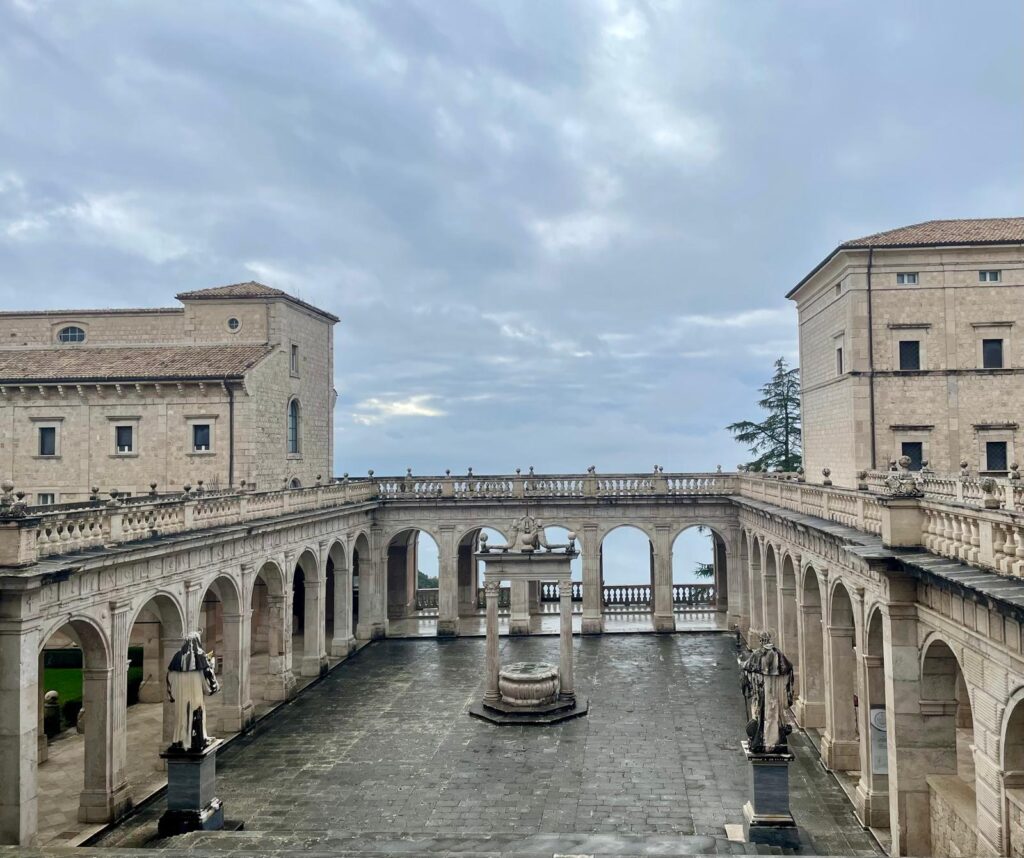
December 12, 2023
“A Brief History of Major Events.”
The Abbey of Montecassino, founded in 529 by Benedict of Norcia, is a place of extraordinary spiritual importance and cultural relevance, whose story unfolds between periods of maximum splendor and dramatic ones.
The first destruction of the Benedictine monastery by Zottone, duke of the Lombards, dates back to 580. In 717, after a period of residence in Rome, the monks returned permanentely in Montecassino, at the behest of Abbot Petronace (670-747), . The support received from both the Lombards and the Franks increased the political and social prestige of the Abbey, which became a center of culture and spirituality, attracting monks from all over Italy and Europe. However, this golden age was tragically interrupted in 883, when Montecassino was razed to the ground by the Saracens coming from their base on the Garigliano River. The monks, this time, found shelter first in Teano, then, in Capua, from where they continued to administer the estates while waiting to return to Holy Mountain. This event was possible only through the courage and resourcefulness of Abbot Aligerno (949-986). It was the beginning of the so-called “golden century” of Cassinese culture, which reached its zenith with Abbot Desiderius (1058-1087), future Pope Victor III, a promoter of the arts and the library heritage.
The 12th-13th centuries represent a particularly difficult time in the history of the Abbey due to the struggles over the succession of the Swabians, the conflicts between the papacy and Frederick II, and a crisis in Benedictine monasticism. Montecassino’s condition improved with the French abbot Bernard Aiglerio (1263-1282), who marked the revival of cultural life in the monastery. In September 1349 a violent earthquake destroyed the Desirean basilica; the slow and difficult recovery was desired by Pope Urban V himself (1362-1370), who restored Montecassino’s abbey status.
In 1799, Napoleonic troops inflicted a severe blow to the monastery’s cultural heritage, looting priceless works of art, manuscripts and artistic treasures. With the Unification of Italy in 1861, the monastery was declared a national monument, both for testifying its high cultural and spiritual value, and for ensuring its preservation as part and parcel of Italy’s historical memory. The most dramatic event of the modern era was the Battle of Monte Cassino, one of the bloodiest military operations of World War II. On February 15, 1944, the abbey was mistakenly bombed by the Allies and completely destroyed. At the end of the conflict, the Benedictine monastery was rebuilt faithfully “where it was and as it was” and it stands, today again, in all its former glory and magnificence continuing to dominate Holy Mountain as a symbol of resistance and rebirth.

